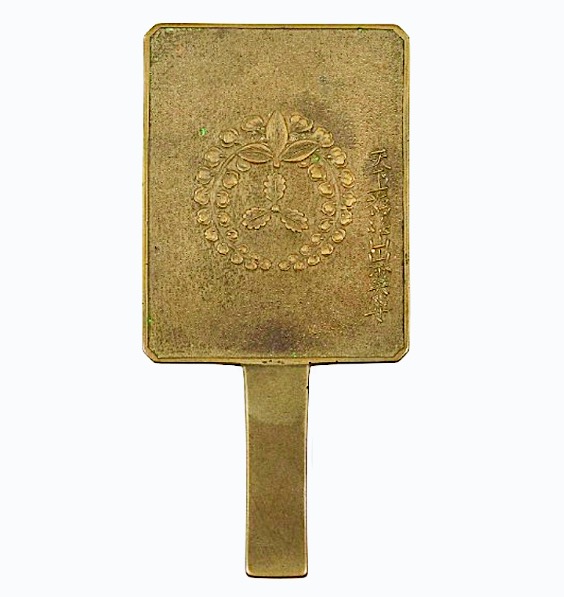

Title: 19th century Antique Japanese Bronze Rectangular Mirror
Shipping: $29.00
Artist: N/A
Period: 19th Century
History: Art
Origin: Central Asia > China
Condition: Very Good
Item Date: N/A
Item ID: 439
A wonderful 19th-century antique Japanese Bronze Mirror. A small rectangular hand mirror, with a silvered finish, foliate design, and signed along the side, 2 ½" x 2 ⅝", Condition: Very good, nice patina. The process of creating mirrors has been known for thousands of years, and mirrors have been made in many different cultures around the world. In Asia, mirrors have been made for hundreds of years using a variety of techniques and materials. One of the oldest methods of making mirrors in Asia was through the use of metal-plating techniques, where a thin layer of metal was applied to a polished metal or glass surface to create a reflective finish. Mirrors were also made by casting metal in a mold and then polishing it to a high shine, or by etching designs or patterns onto the surface of a metal or glass mirror. In recent centuries, other techniques for creating mirrors have been developed, including the use of silvering processes and the creation of mirrors using layers of glass and metal coatings. Today, mirrors are made using a variety of materials and techniques, and antique mirrors from Asia are highly prized by collectors for their beauty and cultural significance.
Relief carving is a type of sculpture in which figures or designs are carved into a flat surface in such a way that they are raised above the surrounding material. In the context of Asian art, relief carving is a technique that has been used for centuries to create a wide range of decorative objects, including sculptures, plaques, and other decorative items. Bronze is a common material used in Asian relief carving, as it is relatively easy to work with and can be cast or carved into a variety of shapes and forms. In traditional Asian relief carving, bronze was often used to create intricate, highly detailed sculptures and other decorative objects. These objects were often adorned with intricate patterns, designs, and symbols that were meaningful to the culture that produced them. Today, relief carving is still a popular art form in many parts of Asia, and many skilled craftsmen and artists continue to create beautiful and intricate bronze objects using this technique.